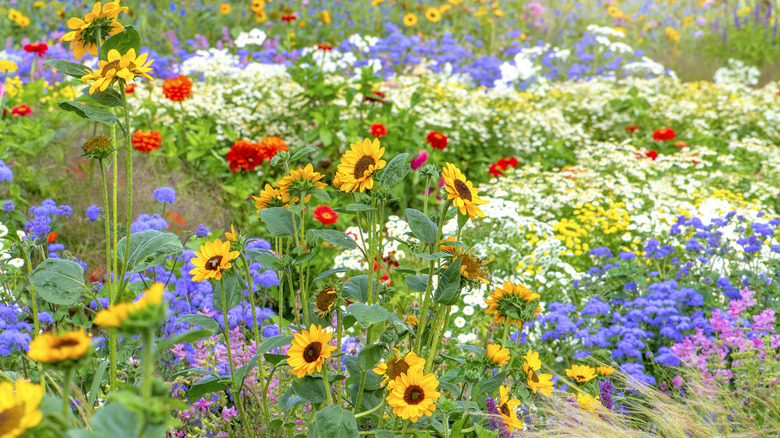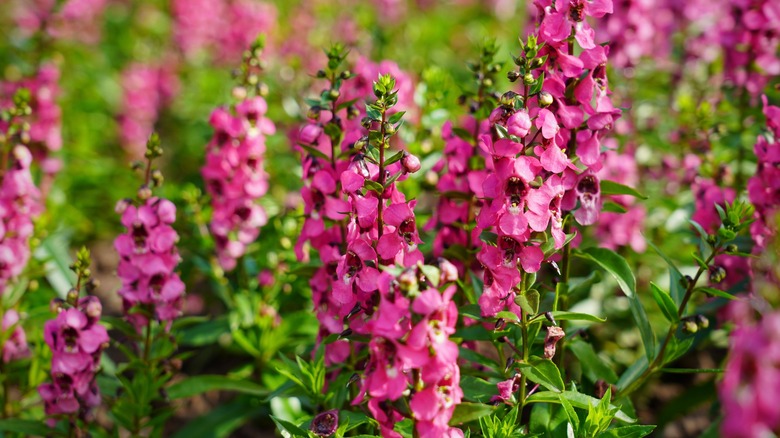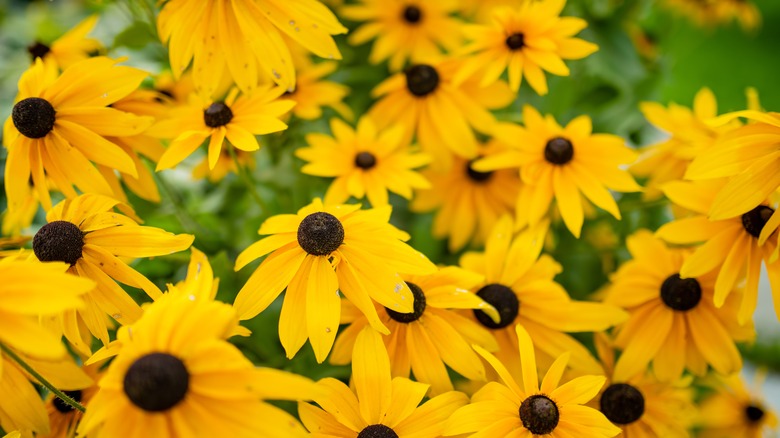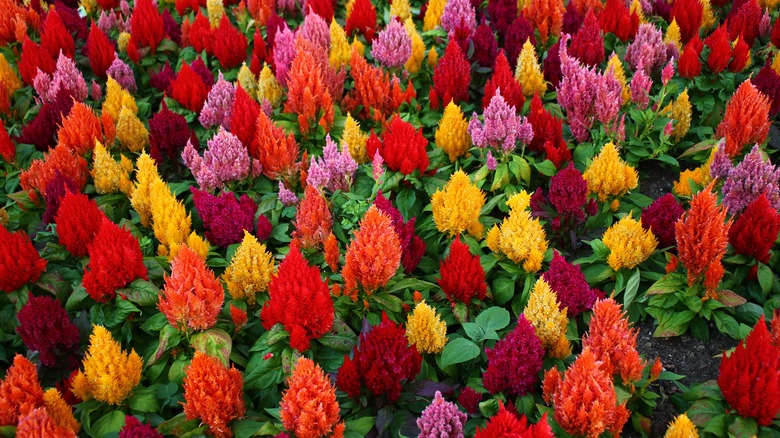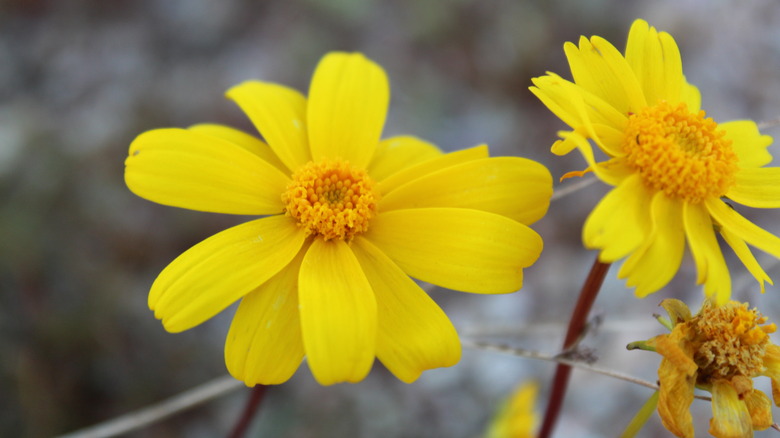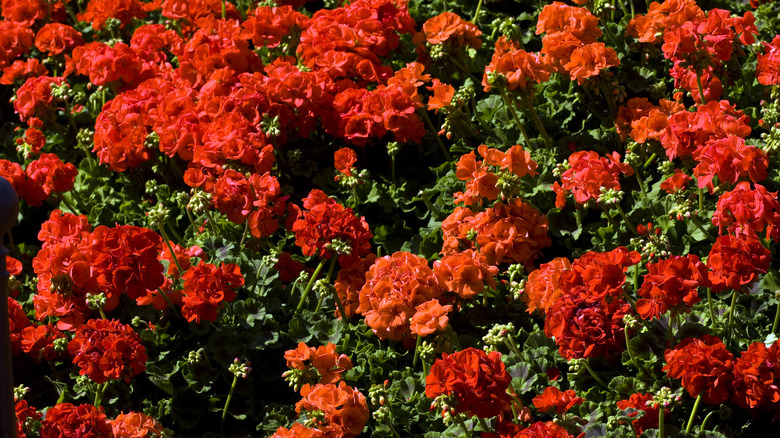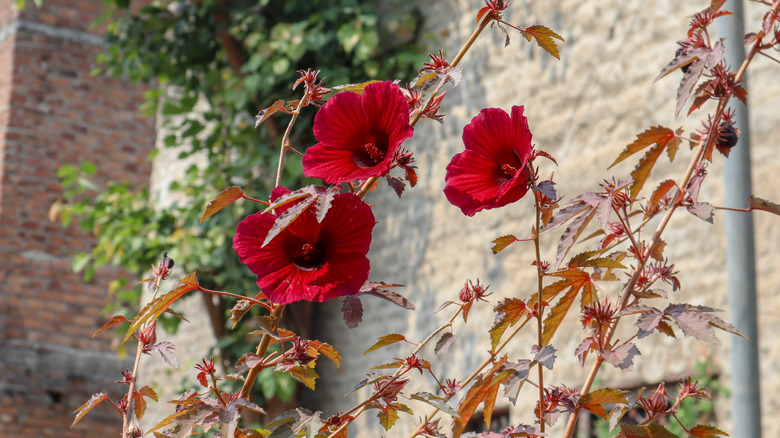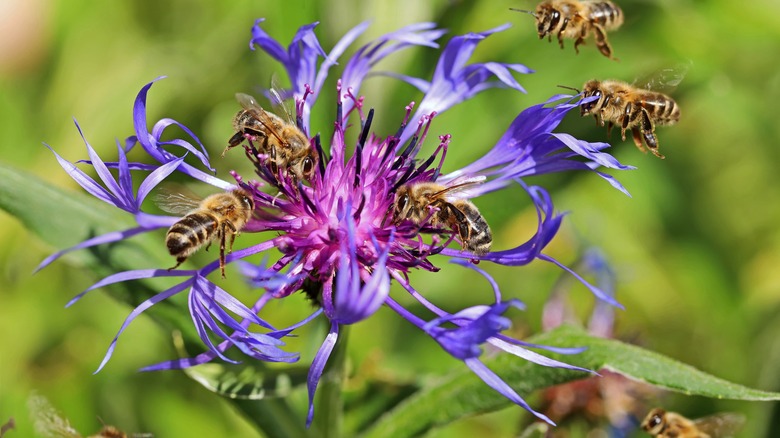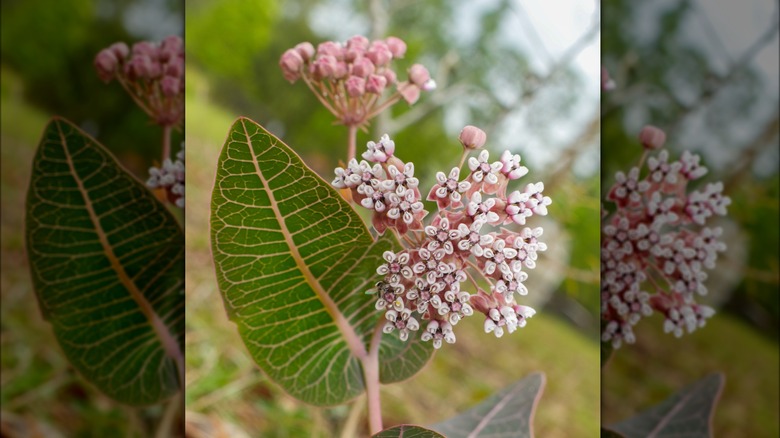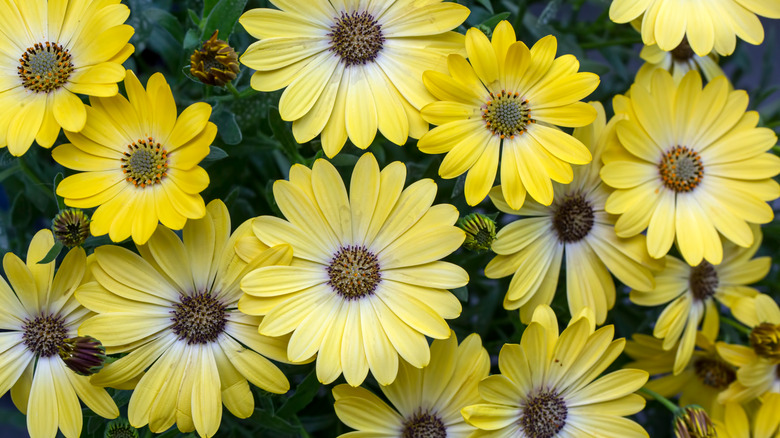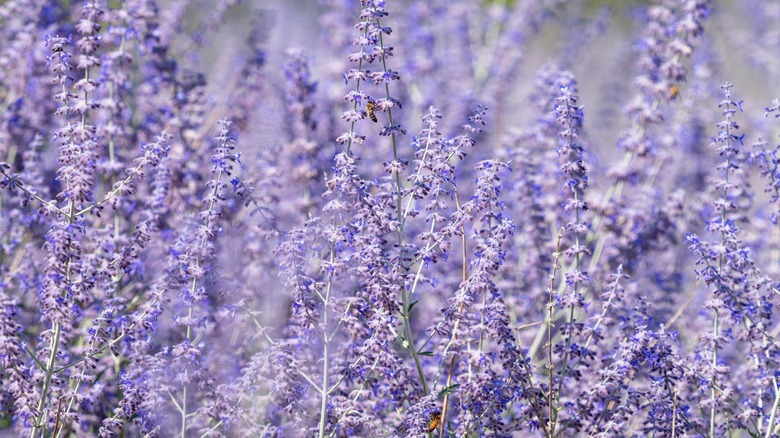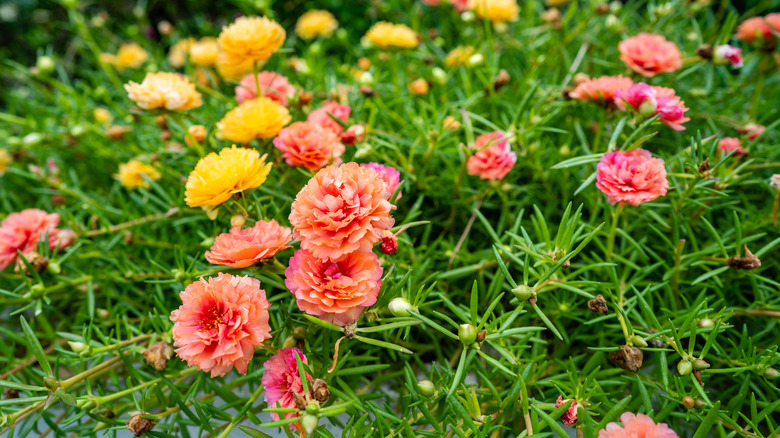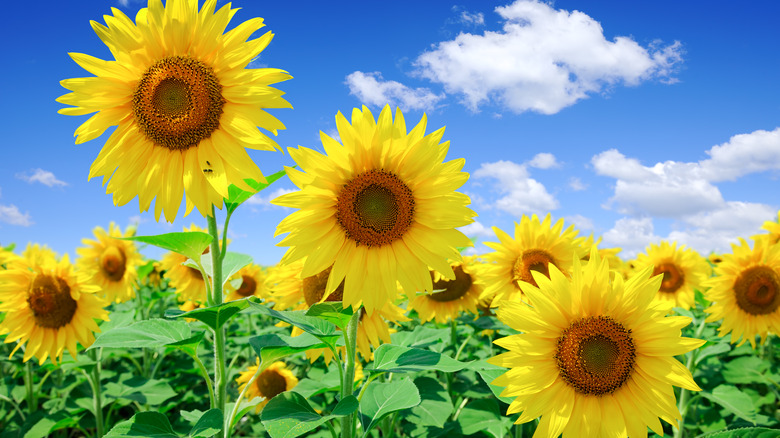12 Gorgeous Flowers To Consider Planting When You Have No Shade In Your Yard
Either due to the natural orientation of your property or a deliberate decision not to grow majestic trees, your yard may be bathed in sunlight from dawn to dusk. While some homeowners might find the brightening effect ever so joyful, the plants might not be on board, especially if they appreciate some cover during the day — the sultry summers are growing fiercer, after all. While your yard's sunny disposition may have forced you to give up on beautiful flowers that grow perfectly in the shade, like begonias, impatiens, primroses, foxgloves, and pansies, it isn't time to hang up your gardening boots. If anything, it's an opportunity to go flower hunting in your nearest nursery!
Like part-shade lovers, there's a whole gamut of sun enthusiasts, such as summer snapdragons, woolflowers, tickseed, sunflowers, and moss roses, who would want maximum sun exposure in your yard to keep them prim and proper. Truly, the challenge isn't how to keep an unsheltered yard alive and flourishing but choosing the flowers to accomplish the job. So, read on for our round-up of the best 12 flowers to fix your predicament, and be prepared to sweat it out a little — the plants are waiting.
1. Summer snapdragon
Don't be fooled by the whimsical name; summer snapdragons (Angelonia angustifolia) feature 8-inch-long spikes of lovely, five-petaled flowers in an assortment of colors (or in combination) like rich purples, serene whites, and pastel pinks from spring-end to early fall. Removing the spent blooms encourages a new, aromatic flush, keeping butterflies in your yard longer — the scented, toothed foliage is a draw, too. Winter hardy in 9 to 11, the sun-lover grows between 12 and 18 inches tall when planted in humus-y, well-draining soils. Watch for aphids and opt to grow disease-resistant cultivars.
2. Orange coneflower
Drawing songbirds and pollinators into your garden without welcoming any deer, orange coneflowers (Rudbeckia fulgida) are low-maintenance U.S. natives with a tolerance for most soil types and urban pollution. Supporting 2 ½-inch wide, chocolate-brown-eyed, amber-ray flowers, they're a must-have in no-shade yards for late summer to fall interest; just be ready to stake them. Mass plant the 3-foot-tall evergreen perennial in borders or use as a specimen in zones 3 to 9. In small gardens, stick to shorter cultivars like 'Viette's Little Suzy' or 'Goldsturm.'
3. Woolflowers
If your yard offers over 8 hours of sunlight, add woolflower (Celosia spp.) plants for their unique flowers that will have your neighbors staring. Separated into three distinct categories: plumosa (feather-shaped, incendiary flowers), cristata (brain or coral-shaped flowerheads), and spicata (cylindrical like wheat stalks), they boast an array of varieties that fit right in with most preferences. Growing up to 3 feet tall, their chartreuse or burgundy foliage can be enjoyed in meals until it matures. Plant the annuals in drifts in cut or sensory gardens, or use them as perennial accents in zones 10 to 11.
4. California tickseed
Endemic to California and Arizona, tickseed (Coreopsis californica) is an annual wildflower, measuring 12 inches tall and 8 inches across. Starring golden-yellow composite blooms with tonally darker disks atop lobed, rosulate, basal green foliage, they're perfect for yards with no shade, especially if you've hopped on the xeriscaping trend. What makes them even more alluring is that they bloom all through winter and spring, giving way to cream seed heads during the summer. Although tolerant of infertile, dry soils, these frost-tender native flowers prefer budding in well-draining, sandy substrates.
5. Geranium
A sought-after bedding plant, geranium (Pelargonium x hybridum, formerly Pelargonium x hortorum) is planted in damp, slightly alkaline soils in zones 10 to 11, provided it's sunny. It features aromatic single or double umbels in an across-the-board color spectrum, including salmon, lilac, and peppermint. Although ethereal butterflies will punctuate the spring-to-fall blooming season, a little rain might imbue the area with an off-putting, fishy smell. Also, the 2-foot-high clump is unsafe around pets, as it contains toxic chemicals like linalool and geraniol. Don't forget to implement the best method for deadheading geraniums to induce another round of blooms.
6. African rosemallow
Cold hardy up to zone 8, the African rosemallow (Hibiscus acetosella or eetveldeanus) stands out in any yard thanks to its garishly maroon flowers that continue blooming throughout the summer, fall, and (occasionally) winter. Although their equally exotic, Japanese maple-reminiscent, burgundy or variegated green foliage is quick to steal their glory, especially when the sun is intent on drawing a halo around them. As the plant can grow almost 5 feet tall, it can be used to create temporary privacy or to accent silver-leaved plants — site in well-draining soils to grab the attention of specialized bees.
7. Mountain bluet
Typified by a plush cyme inflorescence of 2-inch wide, laciniate blue flowers with contrasting burgundy eyes, mountain bluet, or perennial cornflower (Centaurea montana) as it's alternatively called, makes for a colorful addition in no shade yards of zones 3 to 8. Don't give it a taste of fertile soils, though, as the 2-foot tall perennial can turn aggressive; instead, leave it in dry, poor mediums receiving copious sunlight. Although it blooms voraciously in the summer, snipping off its faded blossoms can prompt a wispy fall flush, extending the stay of butterflies and bees in your yard.
8. Pinewoods milkweed
Indigenous to the southeastern U.S. region, pinewoods milkweed (Asclepias humistrata) is for gardeners willing to entertain queen and monarch butterflies, specialized bees, hummingbirds, and moths, despite the risk of developing rashes from an accidental brush with its toxic sap. Happy to sit in dry, sandy, but well-draining soils in zones 8 to 9, this wildflower displays its pink obsession in full glory through the prominent pink veins on its sprawling green foliage, eventually flowing into its magnificent umbels that continue blooming from spring to summer. However, you must start the over 1-foot-high plant with seeds.
9. Cape marigold
Adaptive in all zones so long it faces the sun, cape marigold (Dimorphotheca sinuata) boasts daisy-esque flowers in tantalizing yellow, orange, and salmon pink tonally-shifting hues. Their finely textured, grayish-green foliage is sculpted after spoons, making it a splendid addition to borders or as ground covers, given their compact height (tops out between 4 inches and 1 foot). The best part, though? They lend much-needed vibrancy in late winter, lasting well into spring, keeping butterflies ecstatic. Though considered annuals, they self-seed, enabling their return year after year. Water sparingly to keep the drought-tolerant plant short and upright.
10. Russian sage
A lavender look-alike sans the edibility, Russian sage (Salvia yangii, formerly Perovskia atriplicifolia) is a drought-tolerant garden favorite to attract bees to your yard. The summer-to-fall bloomer sprouts silverish-green, fragrant stems that are lined by whorls of two-lipped bluish-purple flowers. The deer and rabbit-repellent clump stands nearly 4 feet tall and just as wide at maturity, making it ideal for the concluding border rows. Site it in fast-draining, silty, or sandy soils in USDA zones 5 through 9. Full sun keeps the plant from nodding, albeit the flopping shrub suits an informal garden design.
11. Moss rose
In the spirit of its name, moss rose (Portulaca grandiflora) develops a semi-succulent, creeping leafy mat, like moss, with some parts showing red in the sun. Its spring-to-fall flowering season is riddled with a windswept mass of edible, paper-thin, rosette flowers dyed in a continuum of warm colors like gold, fuchsia, and auburn. The zone 2 to 11 dwellers thrive in dry, rocky soils most plants find insufferable and measure 8 and 12 inches, top and across. They can be intermixed with summer bulbs you've added to your garden to mask their dying verdure or as border edging.
12. Sunflower
Add visual drama and structure to your yard with grandiose sunflowers (Helianthus annuus) — yes, the copper-disked, radially spreading golden-orange rayed blooms that scream summer like no other. The ensuing swarm of bees and beetles will only add to the chorus, as will birds who eat its dried seeds with a toddler's prowess. Well-adapted to the sunniest spots in zones 2 to 11, these native, fast-growers can reach almost 10 feet if their genetics allow. Grow the deer-resistant flowers en masse in fertile soils to enjoy a floral display lasting summer through fall, except in Iowa, where it's considered weedy.

